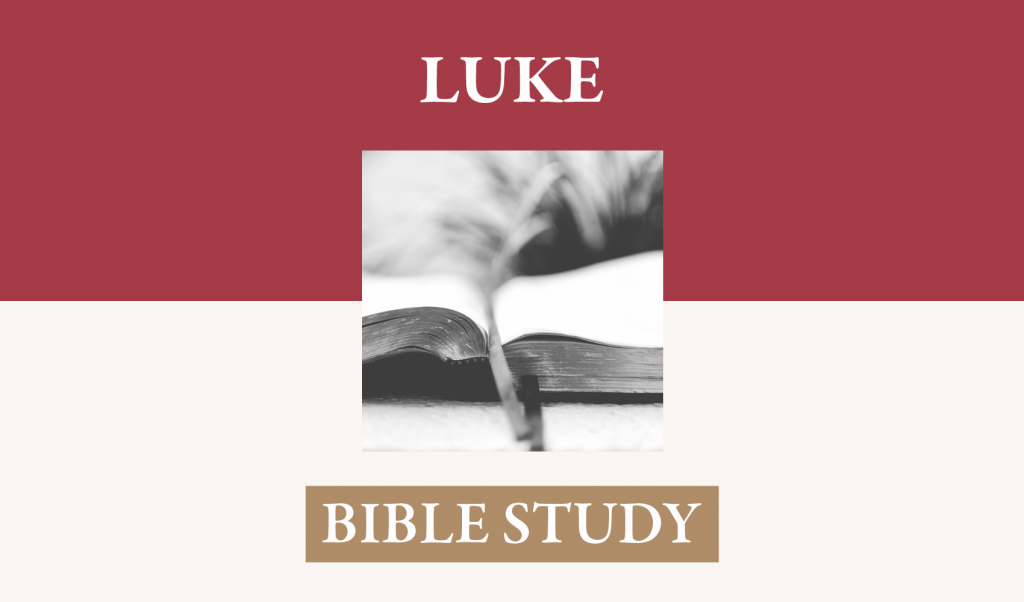I. Historical Setting 1, 2 –
A. Luke gives six historical referents to establish as precise a time as possible. Though Robert Stein shows the complexity of fixing this date (probably around 29), Luke continually drives the reader to understand that the events of the gospel happened truly in history, were consummated in a particular place and at a particular time (Luke 23:44-46).
B. Note the contrast between the powers of the world, secular and religious, and John. The powers of the world were listed but the true power is found in “The word of God came to John the son of Zacharias in the wilderness.”
II. The Person of John:
A. He was the son of Zechariah. Luke shows continuity between the promise to Zechariah and recalls the prophecy of Zechariah, “And you child will be called the prophet of the Most High; for you will go on before the Lord to prepare his ways” (Luke 1:76). fulfilment of prophecy; a voice to prepare the way for the Lord.
B. He was “in the wilderness.” This seems to be his chosen habitat in order that he not be distracted by any worldly concerns or any temptation to court popular acclaim. That he would live an austere life was part of the message of the angel—“He will drink no wine or liquor”—and he would operate in the “spirit and power of Elijah.” As soon as his maturity reached the point of personal independence “he lived in the deserts until the day of his public appearance to Israel” (Luke 1:80).
III. The Message of John: Luke 3:3-9.
A. He preached a new method of identification with the people of God – baptism, immersion in water (verse 3). The sign, given to him by God (cf. John 20:4-8), prefigured the redemptive work of Christ and the necessity of union with him for salvation.
B. He pointed to repentance related to the forgiveness of sins. None come into the kingdom on the basis of natural birth but only by the new birth (John 3:3). The new birth is evidenced in repentance upon the recognition of a need for the forgiveness of sins (verse 3).
C. He preached in fulfillment of the prophecy of Isaiah 40: 3, 4. He would make ready the way of the Lord and make the paths straight and smooth for his appearing. His task was to show that Jesus’ message, person, and sacrifice were not mere isolated phenomena but were in continuity with God’s redemptive purpose and his design to collect a people for himself, a redeemed, worshipping people. John preached the kingdom and Jesus preached and his disciples preached the kingdom; most importantly, Jesus is the King of the kingdom. John preached repentance and Jesus and his disciples preached repentance (Mark 1:14, 15; Luke 13:3, 5; Acts 2:38). John pointed to Jesus as the infinitely worthy one; Jesus said that he who does not honor him does not honor the Father. John pointed to Jesus as the Lamb of God; Jesus offered himself as the atoning sacrifice.
D. John gave dire warning to inquirers abut the deadly poison of their sins and the danger of plunging into an eternity under the wrath of God (verse7). Jesus and his disciples warned about the horrors of a corrupt heart and the fierceness of God’s anger against unrepentant sinners (Luke 13: 24-30)
E. He preached that spiritual change rather than physical identity was the necessary qualification to be among the covenant people.
- Fleshly connection with Abraham does not constitute being a child of God (verse 8). If they truly were the children of God and sons of Abraham, they would bring forth the fruit of repentance. They would be of the faith of Abraham (cf. Galatians 3:7)
- The new covenant is now inaugurated: “The axe is already laid to the root of the trees; so that every tree that does not bear fruit is cut down and thrown into the fire.” (verse 9). The physical continuity of the Old Covenant realized in the Mosaic economy had now given way to the reality of a redeemed community brought together by the Spirit of God (cf. John 4:21-24).
- His message realized the fulfillment of Ezekiel 36:26, 27; 37:24-26. They needed to be cleansed and given a new heart. God’s own Spirit must come to dwell in them to give them a new Spirit desiring to walk in his ways. They will come to embrace the final king in the line of David as the one who consummates the covenant of peace, an everlasting reconciliation.
IV. When persons came to ask what repentance would look like in their case, he gave specific Instructions. Covetousness is the root of all sins against neighbor, so the mortification of a covetous spirit is fundamental to repentance (verses 10-14).
A. They should live with an eye to mercy toward those in need. “Share your clothes and your food.” If you have more possessions than you need, and you see those in need, do not cling to your material wealth but use it to increase the well-being of others and demonstrate unity in the Spirit.
B. Likewise, be honest in all your business dealings. Do not take advantage of authority to make yourself wealthy by treachery toward your neighbor. “Collect no more than what you have been ordered to” (13).
C. The same temptation of unwarranted gain lay upon soldiers as well as the tax-collectors. Rather than enrich themselves through their position of authority by threats or false accusations, soldiers were to live within their mean being content with the wages of their position (14).
V. John knew that his appointed mission was to point to Jesus. He did not bask in the amazement and curiosity of the people. Knowing that they were considering whether he might be the Messiah, John quickly dispelled any such thinking and remained faithful to his divine assignment.
A. He pointed to the worth of Jesus.
- “One is coming who is mightier than I.” He is above the level of a mere man in his ability to accomplish his work.
- His “sandal strap I am not worthy to unloose.” Above all mere men is the worth of this one. His holiness and his intrinsic excellence places him in the position of one who should be worshipped.
B. His Work
- This is the One who baptizes in the Holy Spirit
- He pours forth the Spirit – Acts 2:33 (cf. Joel 2:28, 29; Ezekiel 36:24-27).
- At Pentecost Jews were gathered from all nations and the Spirit was poured out on the apostles. In spiritual unction and revelational truth they were empowered to preach the first gospel sermon subsequent to the historical accomplishment of the gospel. This preaching sounded forth with the miracle of hearing in a variety of languages accompanying the preaching. The Spirit brought about conviction and the message of repentance based on the finished work of Christ was given.
- The Book of Acts records how the Gentiles also were made to partake of this same work of the Spirit at the house of Cornelius (Acts 10: 44).
- The sacrifice of the Lamb of God creates the reality of Life in the Spirit – Romans 8:1-4 says, that in his incarnation Christ “condemned sin in the flesh, that the righteous requirement of the law might be fulfilled in us who do not walk according to the flesh but according to the Spirit.” The coming of the Spirit was dependent on the success of Christ’s atoning work and the successful application of Christ’s atoning work depends on the Spirit’s subduing of the power of the flesh. Christ’s once-for-all sacrifice enables the ongoing work of the Spirit. The Spirit gives us union with Christ, resulting in imputation of righteousness and transformation into his image
- He creates the church by the Spirit – 1 Cor 12:3, 12, 13
- He creates the spiritual life which is the foundation for the character of the church. Regenerate church membership is the goal of preaching the gospel and baptizing those who repent of sin, confess that Jesus is Lord (1 Corinthians 12:3), and believe in their heart that God raised him from the dead.
- He gives gifts by which the church grows (1 Corinthians 12:4-7) into a unity in the faith and the knowledge of the Son of God (Ephesians 4: 11-13). This growth is a product of the unity given by the Spirit in the bond of peace (Ephesians 4:3). For that reason, Christians must take care that they do not grieve the Holy Spirit of God (Ephesians 4:30).
- He pours forth the Spirit – Acts 2:33 (cf. Joel 2:28, 29; Ezekiel 36:24-27).
- He divides the wheat from the chaff in his judgment and redemption (17).
-
- He gathers his people from the nations
- He judges the world in righteousness
C. When John baptized Jesus, we find a profound witness to the Person of the Savior.
- His baptism points to his representative humanity
-
- His baptism identifies him with the message of John the Baptist. Had he not endorsed both the message and the practice of John, Jesus could hardly have used John’s ministry as a way to confute the Pharisees and identify himself in terms announced by John, “The Lamb of God who takes away the sin of the world.”
- His baptism identifies him with the people he came to save. Jesus was not a sinner and needed no repentance, but this first act of identification with sinners represented his being made sin for us and made a curse for us.
-
- His baptism identifies him as having a true body. Jesus was no phantom, no spiritual apparition. He was flesh of our flesh and bone of our bones for whose sake he left his Father’s presence and glory above to dwell among men as a man and finally to bear their sins in his own body on the tree, even as his body had been plunged under the waters of repentance.
- The voice from heaven identifies him as Son of God
-
- Not by adoption or regeneration in the way that we are sons of God
- We are children of God because of covenantal love given us in the covenant of redemption. That status of children will come to consummation in holiness at the visible appearing of the Lord (1 John 3:1, 2).
- Our status of sons of God is given upon receiving him, believing in him. Such belief comes through the new birth (John 1:12).
- Again, in our natural condition we are in bondage to sin and the various philosophies and moral standards of the world. The “adoption as sons” is received through the work of Christ and is effected by the work of the Spirit (Galatians 4:4-7: “God sent forth His Son . . . because you are sons, God has sent forth the Spirit of His Son . . . You are no longer a slave but a son)”
- Not because of the virgin birth or the resurrection – Jesus’ sonship preexisted the incarnation by eternal generation (Luke 1:35) In his resurrection he did not become, but was declared to be, the “Son of God with power” by the Spirit of Holiness (Romans 1:3, 4).
- The Sonship of Jesus is by eternal essence and relationship.
- the phrase, “Sending His own Son in the likeness of sinful flesh,” indicates that Jesus already was Son when he was sent (Ro 8:3).
- The prophetic ministry of Jesus differed both in kind and in perfection from that of the former prophets in that “In these last days he has spoken to us by a Son” (Hebrews 1:2). He has spoken through one whose qualitative existence is that of Son.
- The eternal unity of essence between Father and Son may be deduced from John’s words, “This is the antichrist, the one who denies the Father and the Son. Whoever denies the Son does not have the Father; the one who confesses the Son has the Father also” (1 John 2:22, 23).
- “The Son of God appeared for this purpose, that he might destroy the works of the Devil” (1 John 3:8). The one who preexisted as the Son of God made his appearance in this world to reverse the curse of death and damnation brought on by Satan’s enmity.
- “By this the love of God was manifested in us, that God has sent His only begotten Son into the world so that we might live through Him” (1 John 4:9). None else would do. Who could offer an acceptable propitiation to the Father except one who was loved eternally and infinitely and who shared the same essence of pervasive goodness?
- The Father/Son interaction denotes an eternal relationship. Jesus claimed equal effectuality in his working, a perfect perception of the Father’s working, a perfect transparency of the Father toward the Son, the power to grant life like that of the Father, and the prerogative to judge because his knowledge of absolute justice is the same as the Father’s. In light of this, people should honor the Son even as they honor the Father (John 5:17-26). Also see John 8:42; 13:3.
- Not by adoption or regeneration in the way that we are sons of God
- His genealogy (23-38) ties him to the entire covenant relationship of God with the ethnic covenant people, the Jews, and with each covenant relationship established with humanity in general. The genealogy includes David, Abraham, Noah, and Adam.




















